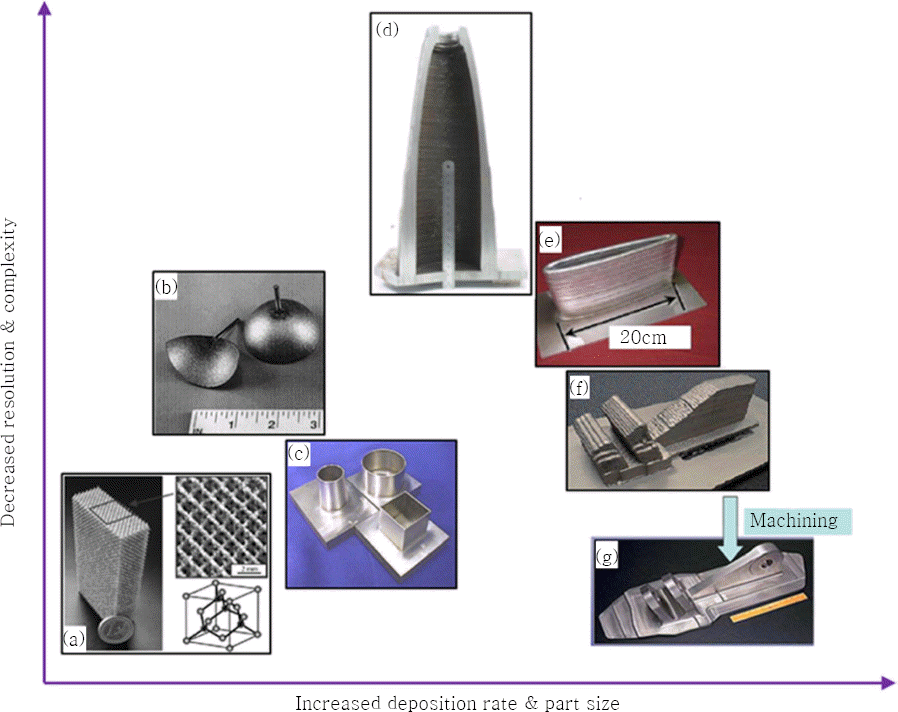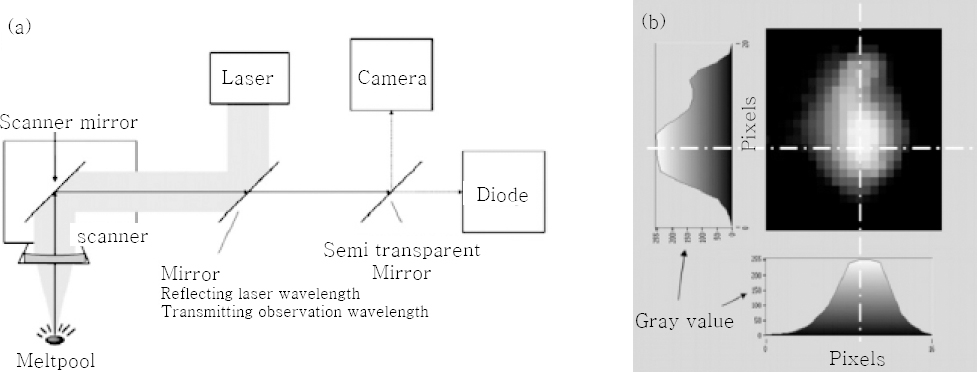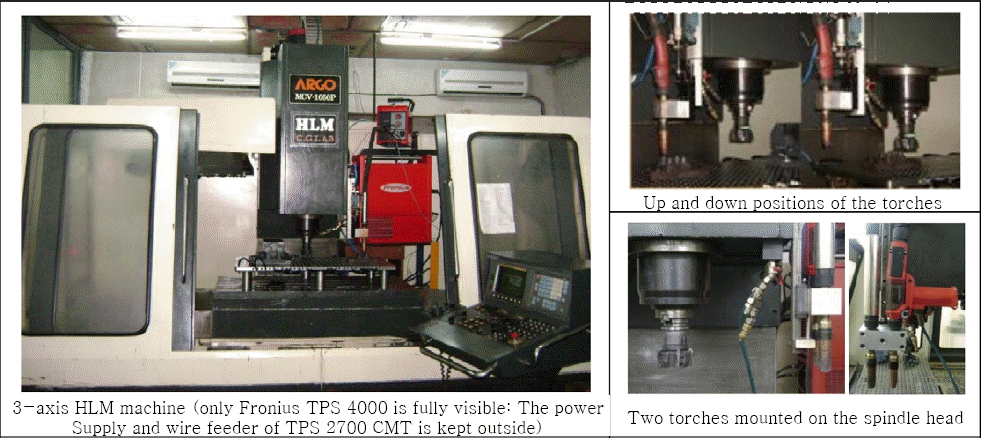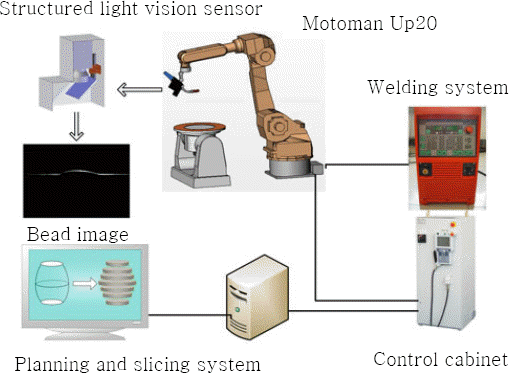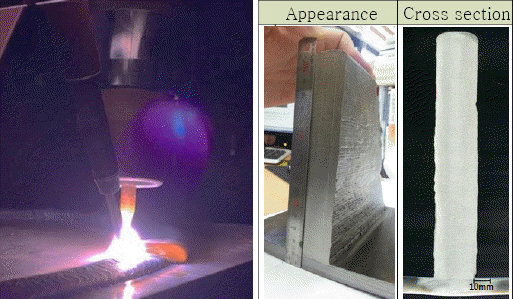References
1. ASTM, F2792-12a. Standard Terminology for Additive Manufacturing Technologies
2. Terner , Mathieu . “The Current State, Outcome and Vision of Additive Manufacturing.”. Journal of Welding and Joining 2015;33(6):12.
3. Ding , Donghong , et al. Wire-feed additive manufacturing of metal components, technologies, developments and future interests. The International Journal of Advanced Manufacturing Technology 2015;81.1-4:465–481.
4. Craeghs , Tom , et al. Online quality control of selective laser melting. Proceedings of the Solid Freeform Fabrication Symposium 2011. Austin, TX.
5. Berumen , Sebastian , et al. Quality control of laser-and powder bed-based Additive Manufacturing (AM) technologies. Physics procedia 2010;5:617–622.
6. Gharbi , Myriam . et al. Influence of various process conditions on surface finishes induced by the direct metaldeposition laser technique on a Ti-6Al-4V alloy. Journal of Materials Processing Technology 2013;213(5):791–800.
7. Kim , Woosung , et al. “Effects and Application Cases of Injection Molds by using DED type Additive Manufacturing Process.”. Journal of Welding and Joining 2014;32(4):348–352.
8. Watson J. K. et al. Development of a prototype low-voltage electron beam freeform fabrication system 2002;
9. Taminger Karen, Robert A. Hafley. Electron beam freeform fabrication, a rapid metal deposition process 2003;
10. Taminger, Karen M, Robert A. Hafley. Electron beam freeform fabrication for cost effective near-net shape manufacturing 2006;
11. Stecker S. et al. Advanced Electron Beam Free Form Fabrication Methods & Technology. Session 2 2006;:12.
12. Seufzer W. J, Taminger K. M. Control methods for the electron beam free form fabrication process. NATIONAL AERONAUTICS AND SPACE ADMIN LANGLEY RESEARCH CENTER HAMPTON VA 2007;
13. Mitzner Scott, et al. Grain refinement of freeform fabricated Ti-6Al-4V alloy using beam/arc modulation 2012;
14. Fox Jason, Jack Beuth. Process mapping of transient melt pool response in wire feed E-beam additive manufacturing of Ti-6Al-4V, Solid Freeform FabricationSymposium 2013. Austin, TX.
15. Gockel Joy, Jack Beuth, Karen Taminger. Integrated control of solidification microstructure and melt pool dimensions in electron beam wire feed additive manufacturing of Ti-6Al-4V. Additive Manufacturing 2014;1:119–126.
16. Dickens P. M. et al. Rapid prototyping using 3-D welding. Proc. Solid Freeform Fabrication Symp 1992;
17. Everton, Sarah K. et al. Review of in-situ process monitoring and in-situ metrology for metal additive manufacturing. Materials & Design 2016;
18. Zhang Yu Ming. et al. Automated system for welding-based rapid prototyping. Mechatronics 2002;12(1):37–53.
19. Zhang YuMing, et al. Weld deposition-based rapid prototyping, a preliminary study. Journal of MaterialsProcessing Technology 2003;135(2):347–357.
20. Almeida P. S, Williams S. Innovative process model of Ti-6Al-4V additive layer manufacturing using cold metal transfer (CMT). Proceedings of the Twenty-first Annual International Solid Freeform Fabrication Symposium 2010. TX, USA: University of Texas at Austin, Austin.
21. Ding J. et al. Thermo-mechanical analysis of Wire and Arc Additive Layer Manufacturing process on large multi-layer parts. Computational Materials Science 2011;50(12):3315–3322.
22. Martina F, et al. Investigation of the benefits of plasma deposition for the additive layer manufacture of Ti-6Al-4V. Journal of Materials Processing Technology 2012;212(6):1377–1386.
23. Zhai Yun. Early cost estimation for additive manufacture. 2012;
24. Adebayo Adeyinka. Characterisation of integrated WAAMand machining processes. 2013;
25. Bandari Yashwanth K, et al. ADDITIVE MANUFACTUREOF LARGE STRUCTURES, ROBOTIC OR CNC SYSTEMS?
26. Karunakaran K. P, Sreenathbabu A, Vishal Pushpa. Hybrid layered manufacturing, direct rapid metal tool-making process. Proceedings of the Institution of Mechanical Engineers, Part B, Journal of Engineering Manufacture 2004;218(12):1657–1665.
27. Akula Sreenathbabu, Karunakaran K. P. Hybrid adaptive layer manufacturing, An Intelligent art of directmetal rapid tooling process. Robotics and Computer-I ntegrated Manufacturing 2006;22(2):113–123.
28. Suryakumar S, et al. Weld bead modeling and process optimization in hybrid layered manufacturing. Computer-Aided Design 2011;43(4):331–344.
29. Zhao Huihui, et al. Three-dimensional finite element analysis of thermal stress in single-pass multi-layer weld-based rapid prototyping. Journal of Materials Processing Technology 2012;212(1):276–285.
30. Xiong Jun, et al. Vision-sensing and bead width control of a single-bead multi-layer part, material and energy savings in GMAW-based rapid manufacturing. Journal of Cleaner Production 2013;41:82–88.
31. Xiong Jun, et al. Modeling of bead section profile and overlapping beads with experimental validation for robotic GMAW-based rapid manufacturing. Roboticsand Computer-Integrated Manufacturing 2013;29(2):417–423.
32. Xiong Jun, et al. Modeling of bead section profile and overlapping beads with experimental validation for robotic GMAW-based rapid manufacturing. Robotics and Computer-Integrated Manufacturing 2013;29(2):417–423.
33. Xiong Jun, et al. Bead geometry prediction for robotic GMAW-based rapid manufacturing through a neural network and a second-order regression analysis. Journal of Intelligent Manufacturing 2014;25(1):157–163.
34. Aiyiti Wurikaixi, et al. Investigation of the overlapping parameters of MPAW-based rapid prototyping. Rapid Prototyping Journal 2006;12(3):165–172.
35. Lin J. J, et al. Microstructural evolution and mechanical properties of Ti-6Al-4V wall deposited by pulsed plasma arc additive manufacturing. Materials & Design 2016;102:30–40.
36. Katou M, et al. Freeform fabrication of titanium metal and intermetallic alloys by three-dimensional micro welding. Materials& design 2007;28(7):2093–2098.
37. Horii Toshihide, Soshu Kirihara, Yoshinari Miyamoto. Freeform fabrication of Ti-Al alloys by 3D micro-welding. Intermetallics 2008;16(11):1245–1249.
38. Horii Toshihide, Soshu Kirihara, Yoshinari Miyamoto. Freeform fabrication of superalloy objects by 3D micro welding. Materials & Design 2009;30(4):1093–1097.
39. Keizo TANAKA, et al. Strength of manufacturing object made by direct metal lamination using arc discharge. The japan society of mechanical engineers 2013;79(800):1168–1178.
40. Brandl Erhard, et al. Mechanical properties of additive manufactured titanium (Ti-6Al-4V) blocks deposited by a solid-state laser and wire. Materials & Design 2011;32(10):4665–4675.
41. Brandl Erhard, et al. Deposition of Ti-6Al-4V using laser and wire, part I, Microstructural properties of single beads. Surface and Coatings Technology 2011;206(6):1120–1129.
42. Brandl E, et al. Additive manufactured Ti-6Al-4V using welding wire, comparison of laser and arc beam depositionand evaluation with respect to aerospace material specifications. Physics Procedia 2010;5:595–606.
43. Levy Gideon N, Ralf Schindel, Jean-Pierre Kruth. Rapid manufacturing and rapid tooling with layer manufacturing (LM) technologies, state of the art and future perspectives. CIRP Annals-Manufacturing Technology 2003;52(2):589–609.
44. Baufeld Bernd, Erhard Brandl, Omer Van der Biest. Wire based additive layer manufacturing, comparison of microstructure and mechanical properties of Ti-6Al-4V components fabricated by laser-beam deposition and shaped metal deposition. Journal of MaterialsProcessing Technology 2011;211(6):1146–1158.
45. Baufeld Bernd, Omer Van der Biest. Mechanical properties of Ti-6Al-4V specimens produced by shaped metal deposition. Science and technology of advanced materials 2016;
46. Ding Donghong, et al. A multi-bead overlapping model for robotic wire and arc additive manufacturing (WAAM). Robotics and Computer-Integrated Manufacturing 2015;31:101–110.
47. Ma Yan, et al. The effect of location on the microstructure and mechanical properties of titanium aluminides produced by additive layer manufacturing using in-situ alloying and gas tungsten arc welding. Materials Science and Engineering 2015;A 631:230–240.
48. Ma Yan, et al. Effect of interpass temperature on in-situ alloying and additive manufacturing of titanium aluminides using gas tungsten arc welding. Additive Manufacturing 2015;8:71–77.
49. Ding Donghong, et al. Wire-feed additive manufacturing of metal components, technologies, developments andfuture interests. The International Journal of AdvancedManufacturing Technology 2015;81(1-4):465–481.
50. Ding Donghong, et al. Towards an automated robotic arc-welding-based additive manufacturing system fromCAD to finished part. Computer-Aided Design 2016;
51. Ding Donghong, et al. Bead modelling and implementation of adaptive MAT path in wire and arc additive manufacturing. Robotics and Computer-Integrated Manufacturing 2016;39:32–42.
52. Song Yong Ak, et al. 3D welding and milling, Part I-a direct approach for freeform fabrication of metallic prototypes. International Journal of Machine Tools and Manufacture 2005;45(9):1057–1062.
53. Song Yong-Ak, Sehyung Park, Soo-Won Chae. 3D welding and milling, part II-optimization of the 3D weldingprocess using an experimental design approach. International Journal of Machine Tools and Manufacture 2005;45(9):1063–1069.
54. Cho Sang-Myung, et al. Filler metal shpae for welding. Korea patent 1016440190000 2015;
55. Cho Sang-Myung, et al. Filler metal shpae for welding. Korea patent, 1016273680000 2016;
56. Cho Sang-Myung, et al. Filler metal shpae for TIG welding. Korea patent, 1016216960000 2016;
57. Jun Jae-Ho, Kim Sung-Ryul, Cho Sang-Myung. A Study on Productivity Improvement in Narrow Gap TIG Welding. J. of Welding and Joining 2016;34(1):68–74.
(in Korean).
58. Byun Jae-Gyu, Jun Jae-Ho, Park Song-Yi, Lee Sang-Jun, Oh Dong-Soo, Cho Sang-Myun. Study of Mechanical Property of Metal 3D Printing by Super-TIG Welding. Abstracts of KWJS 2015;62:86. (in Korean).
59. Byun Jae-Gyu, Jun Jae-Ho, Lee Sang-Jun, Oh Dong-Soo, Cho Sang-Myung. Development of The Process to Improve Degree of Freedom in STS316L Metal 3D Printing by Super-TIG Welding. Abstracts KWJS 2015;63:62. (in Korean).
60. Lee Sang-Jun, Byun Jae-Gyu, Cho Sang-Myung. Development of Additive Process on Cylindrical Parts by Super-TIG Metal 3D Printing. Abstracts o the KWJS 2016;64:141. (in Korean).
61. Byun Jae-Gyu, Lee Sang-Jun, Lee Yung-Gyu, Park Soo-Yoong, Cho Young-Tae, Cho Sang-Myung. Development of The Metal 3D Printing Equipment by Super-TIG Welding. Abstracts of KWJS 2016;64:148.
